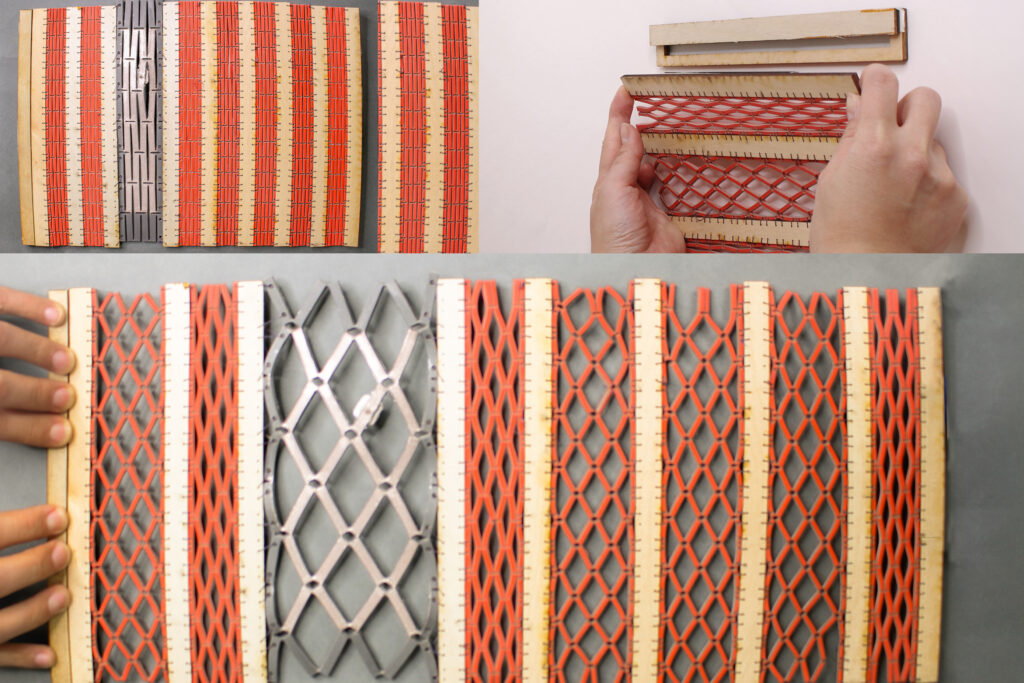
Researchers at the Massachusetts Institute of Technology (MIT) have unveiled a groundbreaking reconfigurable antenna that adapts its frequency range by altering its physical shape. This innovative technology allows users to stretch, bend, or compress the antenna, enabling it to operate efficiently across a broader frequency spectrum without the need for complicated moving parts. The team believes this advancement could significantly enhance communication and sensing capabilities in various applications.
The study focuses on the use of metamaterials, engineered materials designed to exhibit unique mechanical properties based on their geometric composition. This approach differs from traditional antennas, which are typically fixed in design and function. By employing metamaterials, the researchers created a streamlined reconfigurable antenna that can be utilized in fields such as energy transfer for wearable devices, motion tracking for augmented reality, and wireless communication across diverse network protocols.
Marwa AlAlawi, the lead author and a mechanical engineering graduate student at MIT, emphasizes the potential of this technology. “Usually, when we think of antennas, we think of static designs,” she stated. “However, by using auxetic metamaterials that can deform into various geometric states, we can change the properties of the antenna by simply altering its geometry, without the need to fabricate a new structure.” The research includes contributions from co-authors Regina Zheng, Katherine Yan, and others from MIT and the Gwangju Institute of Science and Technology in Korea.
The findings are set to be presented at the ACM Symposium on User Interface Software and Technology later in 2023.
Understanding the Functionality of the Meta-Antenna
Traditional antennas are primarily designed to radiate and receive radio signals. In this research, the focus shifted to their potential as sensors. The team aimed to create a mechanical element that functions both as an antenna and a sensing device. The reconfigurable antenna leverages its “resonance frequency,” which is the frequency at which it operates most effectively. Changes in the shape of the antenna affect this resonance frequency, enabling it to detect environmental changes.
For instance, the antenna could monitor the expansion of a person’s chest during respiration. By altering the antenna’s shape, researchers can capture shifts in resonance frequency, providing a new method for sensing in various applications. AlAlawi explained that metamaterials can achieve these different states from a single structure, which simplifies the design process.
The innovative device, termed the meta-antenna, consists of a dielectric layer sandwiched between two conductive layers. Researchers utilized a laser cutter to fabricate the dielectric layer from a rubber sheet, applying conductive spray paint to form a resonating patch antenna. Initial attempts to use flexible conductive materials led to challenges with durability. AlAlawi noted that coating the structure with flexible acrylic paint helped protect the hinges from premature breakage.
Empowering Users Through Customization
With fabrication challenges addressed, the researchers developed a tool that allows users to design and produce customized metamaterial antennas tailored to specific applications. This design tool enables users to define parameters such as the size of the antenna patch, the thickness of the dielectric layer, and the ratio of the metamaterial unit cells. The system simulates the antenna’s resonance frequency range based on these inputs, streamlining the design process.
“The beauty of metamaterials lies in their interconnected systems,” AlAlawi explained. “This geometric structure reduces the complexity typically associated with mechanical systems.” The team has already integrated meta-antennas into various smart devices, including a curtain that adjusts household lighting and headphones that transition between noise-cancelling and transparent modes. For the headphones, the expansion and bending of the meta-antenna can shift the resonance frequency by 2.6 percent, facilitating mode changes.
Experimental results indicate that the meta-antenna structures are robust, capable of withstanding over 10,000 compressions. The versatility of this technology allows the antenna patch to be patterned onto various surfaces, opening up possibilities for integration into smart textiles for non-invasive biomedical sensing or temperature monitoring.
Looking ahead, the research team aims to develop three-dimensional meta-antennas to expand their range of applications. They also plan to enhance the design tool’s functionality, improve the durability and flexibility of the metamaterial structures, and explore different symmetric metamaterial patterns to further innovate this exciting technology.







